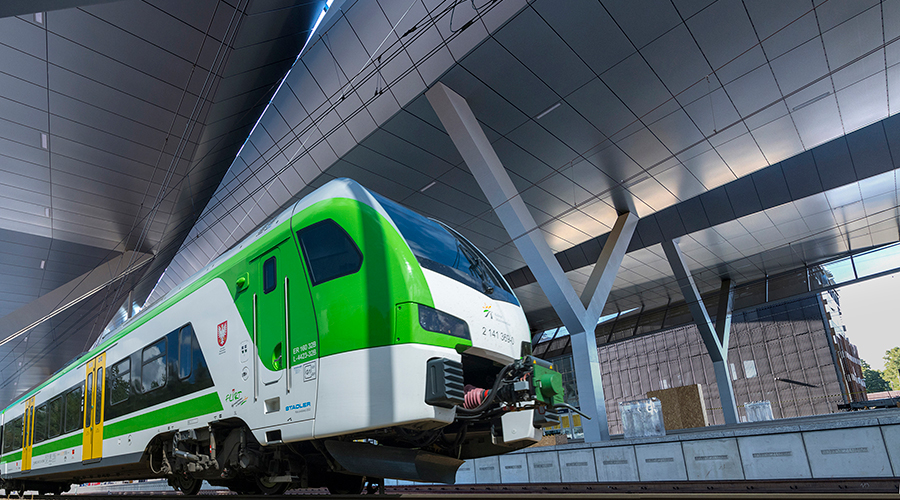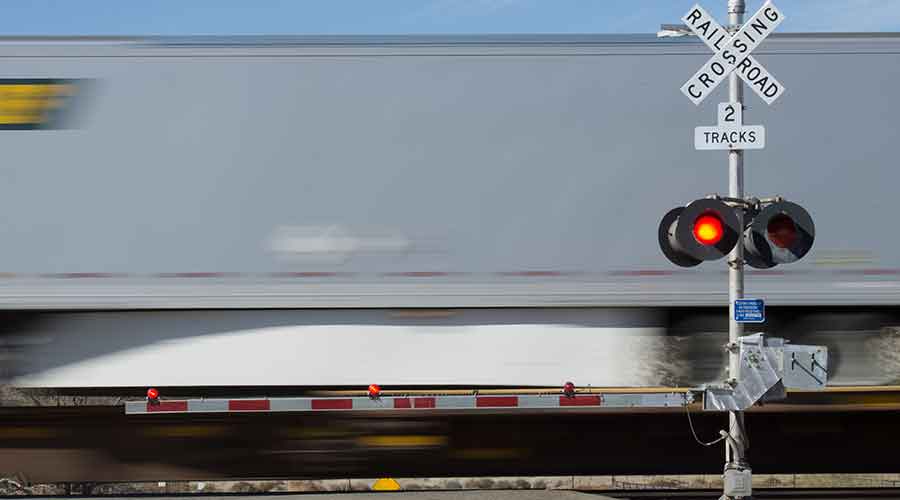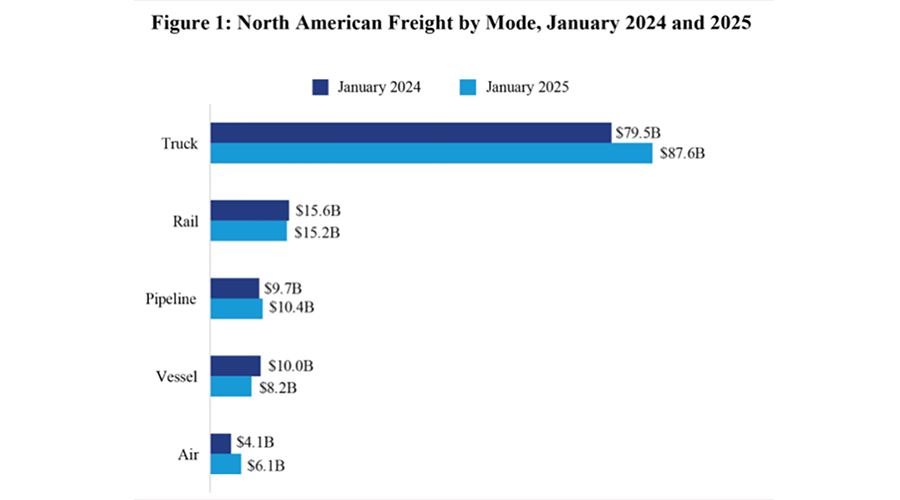Newsletter Sign Up
Stay updated on news, articles and information for the rail industry
Stay updated on news, articles and information for the rail industry
Rail News Home
High-Speed Rail
Rail News: High-Speed Rail
11/1/2011
Rail News: High-Speed Rail
CHSRA unveils draft business plan
advertisement
As expected, the California High-Speed Rail Authority (CHSRA) released a draft business plan today that includes updated cost estimates, ridership figures and funding expectations. And while the authority is standing by its much-debated ridership model, calling it a “sound basis” for future forecasting, it acknowledges that total capital costs for the system will more than double initial estimates, totaling about $98 billion.
The 230-page document outlines a phased construction approach that will enable the authority to adapt to ever-changing financial conditions, according to a CHSRA press release.
“The result is a fiscally sound project that will attract and drive private investment, generate strong revenues and operate without any public subsidies,” CHSRA officials said in a prepared statement.
Beginning with the 130-mile initial operating segment in the Central Valley, each segment will have its own value and independent utility, and will complement the previous segment while augmenting existing local and regional rail networks, the authority said.
The initial segment will be built using public-sector funds, but once the system is operational, ridership will drive revenues that will attract private-sector involvement, CHSRA officials believe.
Some of the key statements included in the business plan:
• “Building the entire system will take longer and cost more than previously estimated; however, as detailed in this business plan, the previous notion of what the system will look like and how it will be built has also been updated. Answers to the questions regarding how much longer it will take and how much more it will cost will depend in part on the pace and type of funding that is provided. It also will depend on decisions on system routing and design to be made by a wide range of stakeholders, including communities, elected officials, the federal government, and partner transportation agencies.”
• “There are two keys to cost-effective and timely implementation of a statewide high-speed rail system: dividing the program into a series of smaller, discrete projects that build upon each other but also can stand alone to provide viable high-speed rail service; and making advance investments in regional and local rail systems to leverage existing infrastructure and benefit travelers by providing interconnecting ‘blended’ services.”
• “The decision to move ahead with the initial step does not commit the state to proceeding with the full program. By providing decision-makers with the flexibility to change course or timing, the plan preserves flexibility and can adapt to changing economic and budgetary realities or new opportunities.”
• “The priority is to construct the first initial operating section. At that stage, a private operator will be brought on board to operate service, and the potential for attracting private capital investment is greatly enhanced.”
• “The business plan does not assume capital investment in the system until the first Initial Operating Section is in place and generating revenues. This is the point in the program at which risks have been reduced sufficiently to allow access to more private capital at lower costs. One mechanism for seeking early investment is by allowing and seeking unsolicited proposals for private-sector participation from interested parties. Under this process, the authority invites investors, concessionaires, constructors, and other parties to submit proposals for advancing the program in ways not currently planned.”
• “The current cost estimate has increased significantly since the last estimate in 2009, which was based on the programmatic conceptual design. The 2012 business plan estimate ranges from $24.6 to $31.7 billion for the initial operating sections, $40.8 to $48.3 billion for the Bay-to-Basin system, and $65.4 to $74.5 billion for the Full Phase 1 system. Eighty to 85 percent of this increase is for additional viaducts, tunnels, embankment, and retaining walls/trenches directly attributable to changes in scope and alignment based on stakeholder input, environmental necessity, and improved knowledge of site conditions; the remaining 15 to 20 percent is attributable to increases in composite unit prices.”
The public now has 60 days to comment on the plan, which then will be completed and sent to the legislature for approval in January 2012.
To download a copy of the business plan, click here.
The 230-page document outlines a phased construction approach that will enable the authority to adapt to ever-changing financial conditions, according to a CHSRA press release.
“The result is a fiscally sound project that will attract and drive private investment, generate strong revenues and operate without any public subsidies,” CHSRA officials said in a prepared statement.
Beginning with the 130-mile initial operating segment in the Central Valley, each segment will have its own value and independent utility, and will complement the previous segment while augmenting existing local and regional rail networks, the authority said.
The initial segment will be built using public-sector funds, but once the system is operational, ridership will drive revenues that will attract private-sector involvement, CHSRA officials believe.
Some of the key statements included in the business plan:
• “Building the entire system will take longer and cost more than previously estimated; however, as detailed in this business plan, the previous notion of what the system will look like and how it will be built has also been updated. Answers to the questions regarding how much longer it will take and how much more it will cost will depend in part on the pace and type of funding that is provided. It also will depend on decisions on system routing and design to be made by a wide range of stakeholders, including communities, elected officials, the federal government, and partner transportation agencies.”
• “There are two keys to cost-effective and timely implementation of a statewide high-speed rail system: dividing the program into a series of smaller, discrete projects that build upon each other but also can stand alone to provide viable high-speed rail service; and making advance investments in regional and local rail systems to leverage existing infrastructure and benefit travelers by providing interconnecting ‘blended’ services.”
• “The decision to move ahead with the initial step does not commit the state to proceeding with the full program. By providing decision-makers with the flexibility to change course or timing, the plan preserves flexibility and can adapt to changing economic and budgetary realities or new opportunities.”
• “The priority is to construct the first initial operating section. At that stage, a private operator will be brought on board to operate service, and the potential for attracting private capital investment is greatly enhanced.”
• “The business plan does not assume capital investment in the system until the first Initial Operating Section is in place and generating revenues. This is the point in the program at which risks have been reduced sufficiently to allow access to more private capital at lower costs. One mechanism for seeking early investment is by allowing and seeking unsolicited proposals for private-sector participation from interested parties. Under this process, the authority invites investors, concessionaires, constructors, and other parties to submit proposals for advancing the program in ways not currently planned.”
• “The current cost estimate has increased significantly since the last estimate in 2009, which was based on the programmatic conceptual design. The 2012 business plan estimate ranges from $24.6 to $31.7 billion for the initial operating sections, $40.8 to $48.3 billion for the Bay-to-Basin system, and $65.4 to $74.5 billion for the Full Phase 1 system. Eighty to 85 percent of this increase is for additional viaducts, tunnels, embankment, and retaining walls/trenches directly attributable to changes in scope and alignment based on stakeholder input, environmental necessity, and improved knowledge of site conditions; the remaining 15 to 20 percent is attributable to increases in composite unit prices.”
The public now has 60 days to comment on the plan, which then will be completed and sent to the legislature for approval in January 2012.
To download a copy of the business plan, click here.


 LRW Honors Amtrak’s Acheson As Railway Woman Of The Year
LRW Honors Amtrak’s Acheson As Railway Woman Of The Year
 From Editor-In-Chief Foran: Of Gender Equity And Inclusion
From Editor-In-Chief Foran: Of Gender Equity And Inclusion
 Spotlight On Some Of Today’s Rail Safety Products
Spotlight On Some Of Today’s Rail Safety Products
 Women of Influence in Rail eBook
Women of Influence in Rail eBook
 railPrime
railPrime







